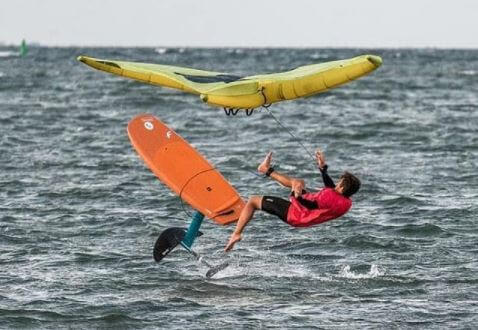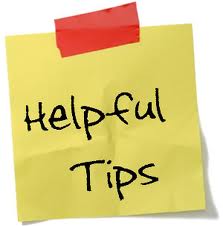Learning wing foiling, perseverance … and a bit of guts
Is learning wing foiling difficult? Not in itself, but it does require certain skills and some perseverance. If you already have ‘foil experience’ then you certainly have an advantage even if you can already windsurf, wave surf or kiting, learning wing foiling is a lot faster. You already know how to balance on the water.
When wing foiling, balancing is very important. You can’t stick to your surf sail and on average the boards are also smaller and therefore less stable. Next, you need to position the wing so that it captures enough wind and you can make enough speed for the next step, flying.

When you first get out of the water, you don’t know what’s going to happen. You accelerate enormously, you feel the huge lift of the foil and it is silent in 1x. Oh yes and then in the air you have to keep your balance. Good wind foilers have also had to learn it and experience it as quite tough in the beginning. Anyway that’s with a lot of things :(.
Wave surfers, wind surfers and foilers in favor
Because wing foiling requires skills that golf surfers, wind surfers and foilers in particular need, these boaters are clearly in favor. The sense of balance is a challenge for most starting wing foilers. Getting the board on the foil is a whole new dimension. Where’s the balance? How do you check the altitude. If you already have experience with any kind of foil, you will also learn wingfoiling faster.
A bit scary in the beginning
Sailing away is not exciting. You’re bobbing away. If you get enough wind in your wing, you will soon get enough speed to get out of the water with a good pumping technique. You feel like quickly that the tip of the board wants to come up. And then it starts! You need to put your weight forward to ensure that the board eventually gets flat again about 50 cm above the water. At the same time, keep your balance and keep the board as stable as possible. And at the same time make sure you keep the wing above your head in the wind.
The rise and descent of your board send you to an important extent by leaning forward or to eights. Once you’ve found the balance, you’ll soon notice that you’re going to make a lot of speed and the pressure in the wing will quickly decrease. Speed you don’t have any real control over yet, let alone your board. And this at a height of about 0.5 meters is quite scary. This is a matter of doing a lot and focusing on what the effect of every movement you make when you’re on the board. Everything is much more sensitive than with normal windsurfing, supping or wave surfing. Your own posture (including the place where you apply pressure), the position of your wing, the pressure in your wing.
Jibes and tack on the foil
The jibe is clearly easier than tacking. In the beginning, the board hits the water again halfway through the jibe. It’s good to start like this. Soon you notice that you feel better and better how you can keep the board in the air longer and let the wing above your head easily rotate. And then there’s the moment you foiled the jibe.
Because the wing rotates above your head and you actually stay in the same spot on your board, it is also possible to get foiled. Even now, the wing rotates above the head. Tacking feels a bit unnatural to most wind surfers, but it’s possible. Really kicking!

Practical tips learning wingfoiling
Due to damage and shame, we have become a little wiser when it comes to wing foiling and in particular how to learn this best or easiest. Below are some tips we have for you;
- Be sure the water is deep enough. Getting stuck during wind foils is disastrous for board, foil and yourself
- Start first on a board without the foil to get the feel with the wing (learn what the best position is to hold and make speed)
- Start with a breeze between 12 and 16 knots (4 bft), preferably when the wind is constant
- Start with a not too large wing, up to 5 to 5.5 m2, see also material guide
- Learning is easiest on a board with about 20 litres more volume than your own weight
- Also keep getting away from your board and make sure you step off on time (where it’s still deep enough)
- Many people feel safer when they wear a helmet and impact vest


